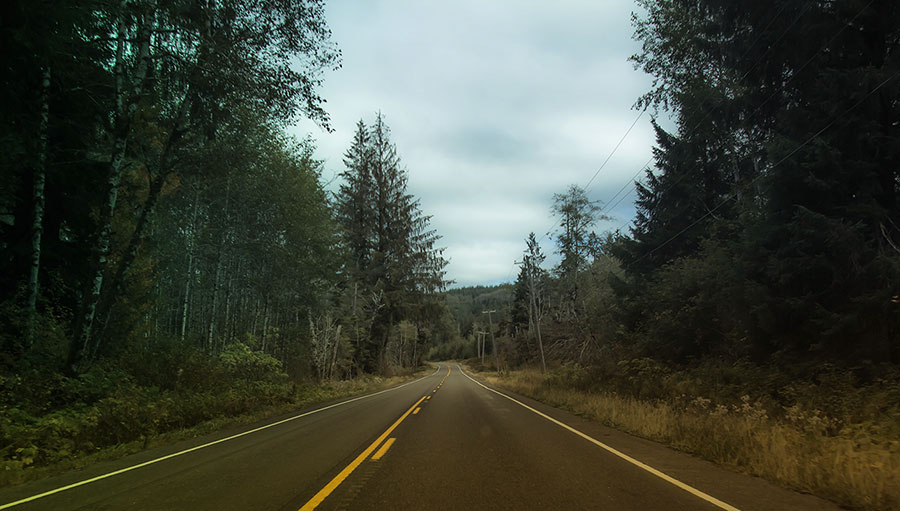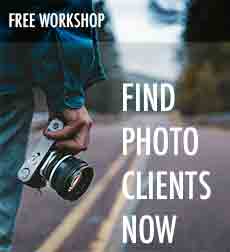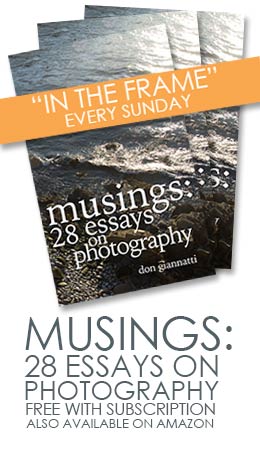
I know that being a professional photographer should be a bed of roses, a magical place where unicorns and rainbows are interspersed between the Bentleys and mansions. A place where creativity is simply something that everyone has in spades, and no one is ever without a great idea.. or three.
Yeah… I imagine it is wonderful there.
I have never been. I live in the other part of the creative world. The one where crap happens, and creativity doesn’t always drip off the fingertips. Where I live people have to work hard to deliver, practice hard to get it right, and push themselves to deliver better and better work every time.
Sometimes a funk moves in. It could be a creative funk, or a business funk, or simply a malaise at the end of a particularly busy and stressful period. There can be many things that wrench our creative energy from us and leave us, well… sort of flat feeling.
The funk moves into our heads and sets up a little flat, meaning to stay for a while. And that, we simply cannot allow.
You see the problem with funk is that it can take over, create patterns of destruction, and make it more and more difficult to get out of. So we have to be proactive and kick that bastard out… evict the funk.
Each of us have ways to do that and work well for us. If you have ways to get the batteries charged and knock the funk from its roost, do it without hesitation.
For those of you who wrestle with it, I can share a few ideas that I use for banishing the funk outta my thoughts.
1. Create an Excitement “Folder”:
Make it easy to save work for your portfolio – and provide an interesting idea gallery.
I can’t believe how many times I will be working with a photographer and ask to see some new images, or to send some images for a portfolio, and be told “Let me see if I can put some together”, or “I’ll look for them.”
That is not terribly efficient. Or wise.
I use a shortcut on the desktop to send any and ALL portfolio possibilities to a folder on an external drive. When I am working on an image, and I feel it has consideration for the portfolio, it is simply dragged to the shortcut and sent to the folder for later review. Keeping the drive external means a copy of the image is sent, so the original is still in the working folder.
When I feel a funk coming on, I go to that folder to explore and review work that I thought cool when I shot it, and now I use that work to trigger new ideas or scenarios I want to work on. Note: this is my folder of work, and not other photographers work. The images in there range from commissioned work, to personal work to iPhone snaps, and experiments. They are loosely catalogued in those titles.
I am sometimes very motivated to creating new work when looking at older/less structured work.
2. Create a Journal – then USE it:
Pencil, pen, quill… who cares? Just do it on paper, not on a screen.
A Journal can be a fantastic way to spike creativity when nothing is going on. And I am not talking about a “diary” or a “blog”, I am referring to a paper journal for image ideas, fun ideas, creative ideas. I put snips of conversations, imaginary play lists, and simple sketches of ideas in mine.
Feeling in a funk? Pull out that journal and begin to make some chicken scratches on a shoot idea. Add some real world info like lens choice and lighting schema. It doesn’t matter if you are ever going to make that shot, the act of doing the sketch is sometimes enough to get something else firing in your synapses.
Next thing you know you are making some images. They may or may not resemble your sketches. And it doesn’t really matter.
3. Refresh the Portfolio:
Sometimes just the act of working on the portfolio gets the juices going.
When is the last time you added new work to your portfolio? I am hoping new work goes in constantly, but alas I also know how notorious photographers can be about not getting new work into the book.
If you haven’t worked on adding new images and deleting older ones in your book, take some time to do it. That simple, yet important project can put you back in touch with your best images… and can work as a strong catalyst to make more.
As you begin to work on your portfolio, you will see the gaps, ideas for new shots will begin to flood in. Grab your journal and make some notes.
4. Start and complete a project:
Even a small one. Concept it, shoot it and produce it.
Yeah, a project. Done. Nothing like it to get the creative juices flowing and stimulate growth into a new project or set of images.
Choose something that can be done in a weekend. Shoot in a day or two, edit and do post on a set of images and add them to your book. Keep it simple if you haven’t done it before or are so busy with all kinds of scattered projects that you feel it is impossible.
A few ideas from my current journal:
- Fake animals as decorations
- Roadtrip up 395 to Canada
- My daughters sea shell collection
- Jazz… portraits/instruments – whatever
- Antique wardrobe/edgy models
- Cafe Racer Motorcycles on Rte 66
I don’t know if I will get to all of them, but they trigger more ideas all the time. And I hope to do the 395 roadtrip next Spring.
5. Two words for you. Road Trip:
Whether with a photo bud or alone.
Me, a car, the road. Instant creative flow. New places bring freshness of seeing for me. I want to shoot everything I see.
It doesn’t have to be a long trip, just an afternoon could be fun. Go somewhere you don’t normally go. See things you don’t normally see.
Take a friend, to share the journey can sometimes be stimulating to both. Creativity starts to flow and it can become quite an adventure.
Three rules:
1. If you like it, shoot it.
2. If you see it, stop the car, (or turn around) and shoot it.
3. Have fun with your photography.
6. Research some new resources, art, photography, music:
We get used to the same inspirations. Find some new places to recharge.
I have so many different sites I go to for inspiration. Some are “new music” sites, some are photographer’s reps sites, some are stories and articles and of course there are a few photographers I love to visit from time to time.
I also recommend the art museums, art galleries, coffee shops in your town. Here’s an idea – the next time you want to go for coffee, find a little independent coffee shop at least 5 miles from where you live – a different part of town would even be better – grab your iPad or laptop and spend some time there. Different faces, different music.
Different coffee.
Do that same exercise with other forms of art you interact with.
Always listening to rock? Great: Go to Pandora and listen to some Classical.
Always looking at fashion photographers work? Cool, now discover the Renaissance painters and what they did with light.
If you specialize in food, view a bunch of lifestyle shooters. If you shoot lifestyle, check out the formal portraiture of Hollywood’s “Golden Era”.
It really doesn’t matter… just change it the heck up.
(Journal? Yeah… here too)
7. Rent a Film Camera for a Week:
It can be very zen-like to shoot a nice medium format camera.
Get an RZ, or a Hasselblad, or one of those monstrous Fuji’s and make some images. If you have never shot film, get a quick lesson on how to load the camera, and make sure you understand the workings of it. RB’s take two actions to get ready for the next shot, RZ’s only one. If you are a telephoto shooter, rent an additional lens to keep you in that zone.
Shoot a couple of rolls, or shoot a lot. Getting the film processed will be more of a challenge in some areas than learning to shoot the camera. But you will find a place – the rental folks will tell you where to take it.
My favorite film for medium format is color negative film in the ISO 100 – 160 range and black and white in the ISO 100 – 400 range. This is not the time or place to get into all the different films, and if you haven’t shot film, it may not be a discussion that would make sense at this point.
I would suggest a tripod, and use your digital camera to check exposure if you don’t have a meter. Have fun with a new way of taking photos that is actually an old way… of… well, you get the picture.
8. Find a Mentor:
They are out there. Find someone who will take some time to lead and encourage you.
Sometimes all you have to do is ask. Ask for some assistance. Many photographers will be available to help. And those that aren’t…. well, they would probably suck at being a mentor anyway, right?
You can find people willing to help at associations like ASMP, APA, and APPA. Local chapters will be filled with folks who may take time to advise you.
Suggestions: If the photographer who wants to help you is some ol’ grumpy dude who wonders why you are getting into this god-forsaken business cause it has all gone to hell and there is no hope… well… maybe he ain’t the right guy to advise you in your endeavors.
I have had several wonderful mentors in my life, and all I did was ask.
9. Find and Critique Great Images:
Write three paragraphs of what you see. How does the work relate to you and your vision.
Seriously. We look at photographs all the time. But it takes time and energy to actually see them. See them.
Go online and find some great photography. Adams, Caponigro, Avedon, Penn, Weston, and Cunningham are some of the ‘Masters’ that I love. Take an image that you particularly like and write about it. Write three paragraphs on what it is that you like.
This is probably the hardest of all the suggestions I have made. It will force you to confront the image, your understanding of it, what it means in and out of context and more. But it also makes you see the delights that are inherent in wonderful images – of the great ones, and of your own. And writing them down reinforces what it is you find exciting about photography. Do it for an hour… creative block gone.
10. Photograph Someone who usually is not the subject of a photograph:
Make an image that they love and you love.
We can always get models. They are into having their picture taken. Sometimes they can actually stimulate the image and bring it forth.
But making a cool or wonderful picture of someone who isn’t used to being photographed can have it’s own creative rewards as well.
I don’t have any pre-conceived ideas about who and where to shoot, but I know when you read the paragraph above you instantly thought of someone you know. That person… yep, that is the one.
So from talking them into the portrait, to the shoot, post and presentation, you will be thinking creatively. It is incumbent to be creative when working with someone who may not bring any creativity to the image.
Or… they could surprise you. I love it when that happens.
—
Look… the funk is always looking for a place to live. Don’t let it live in your head. Get it out as soon as you can.
We all have some funk in our lives, and those times are not the ones to define us. We are defined by what we accomplish, not by the funk that keeps us from accomplishing. Be strong… and kick the funk the funk out of your life.
What are some of the ways YOU deal with those bouts of funkdom that rob us of creativity and productivity?




